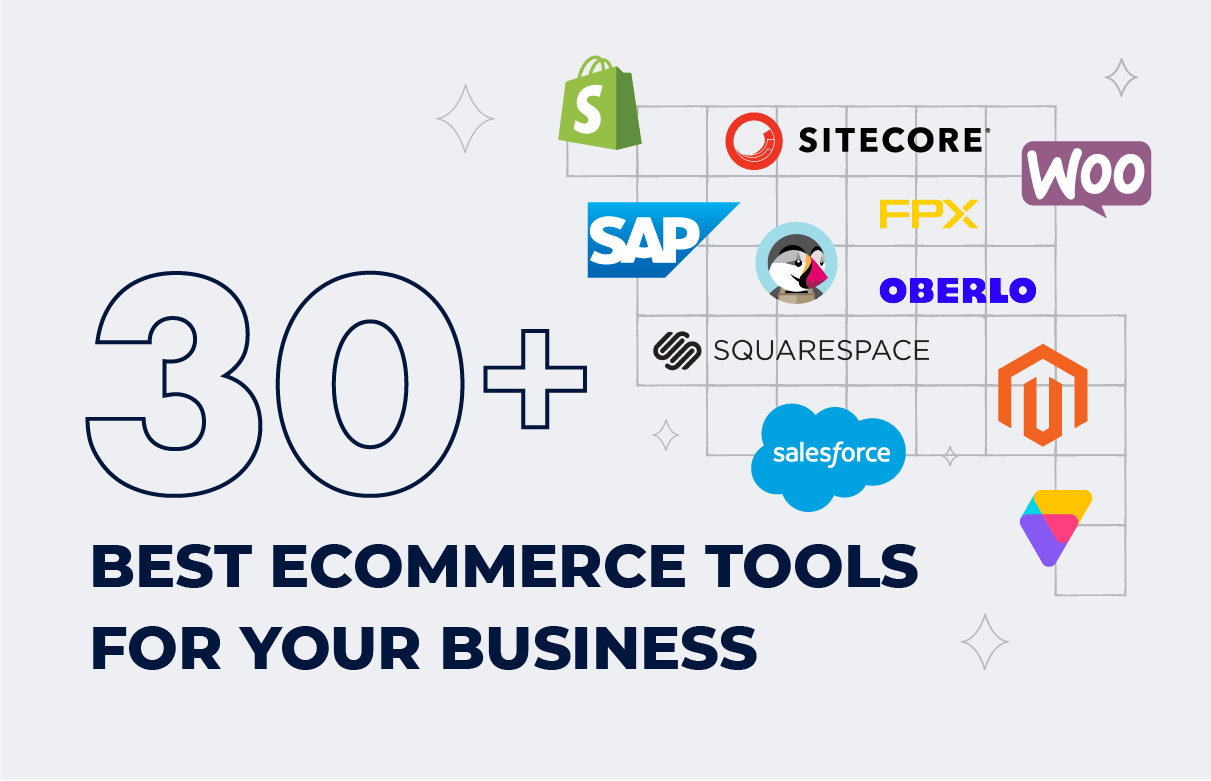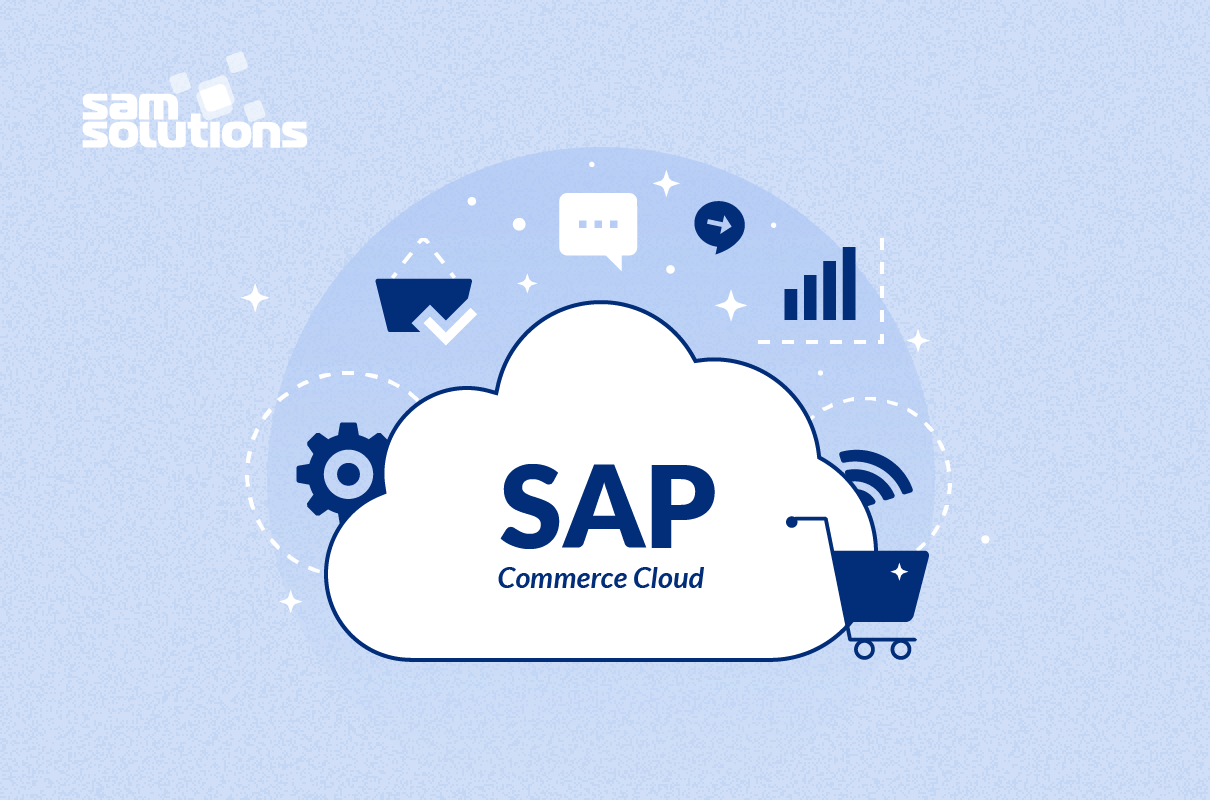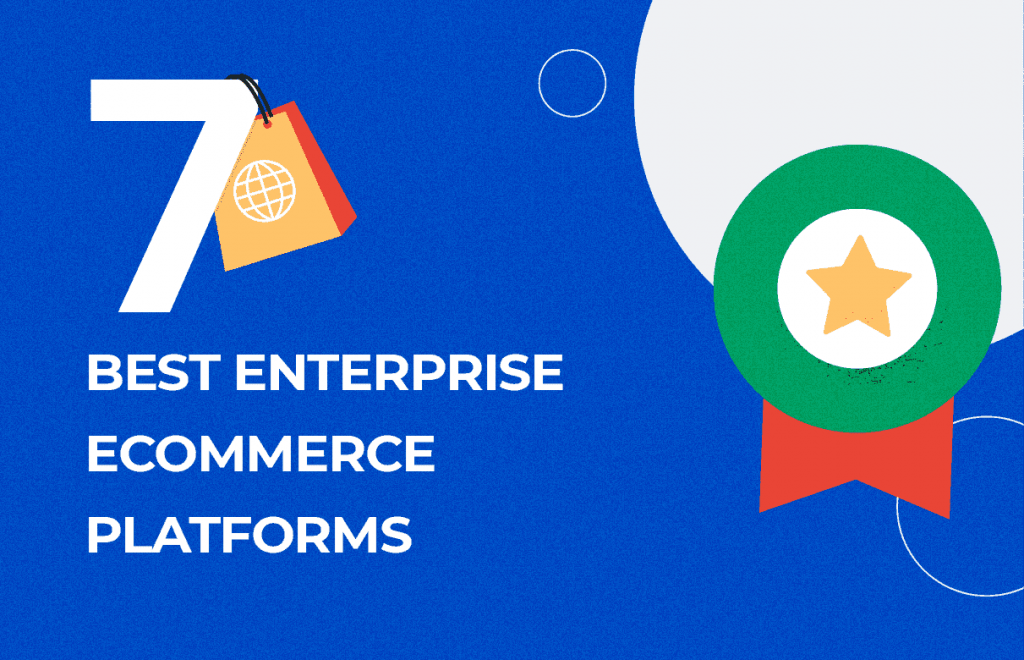Ecommerce has undergone rapid development over the past decade, establishing itself as a mainstream shopping option for consumers of all ages. Whether it’s electronics, home decor, clothing, or food, a vast array of products can now be conveniently delivered to your doorstep, often on the same day you place your order online.
Given that consumers are increasingly turning to online shopping, merchants must continuously improve their services to align with customer expectations. This article covers 20 upcoming trends in ecommerce you need to know in 2024. Keep them in mind if you plan to maintain the competitiveness and relevance of your online store this year and beyond.
Request SaM Solutions’ ecommerce development services to grow your client base and boost profitability of your online sales.
1. Artificial Intelligence (AI)
Artificial intelligence and machine learning technologies are being actively integrated into ecommerce processes, bringing incredible opportunities for improving customer experiences and boosting profits.
The most prevalent applications of AI in online stores include:
- Personalization — delivering customized user experiences by leveraging advanced AI algorithms to analyze customer behavior across diverse touchpoints, including websites, social media, digital signage, marketplaces, and mobile apps. This enables businesses to craft highly personalized offerings that resonate with each customer.
- Smart search engines — utilizing a combination of AI, ML, and natural language processing technologies to understand user intent and search context, even when queries are imprecise, thereby delivering the most accurate results possible.
- Upselling and cross-selling — suggesting complementary products or upgrades to enhance the value of each transaction and improve the overall shopping experience.
- Predictive analytics — forecasting customer behavior, market trends, and product demand with remarkable accuracy, allowing businesses to optimize inventory management, refine marketing campaigns, and ensure a seamless supply chain.
Prominent ecommerce brands such as Amazon, Walmart, Starbucks, H&M, and Nike are already utilizing artificial intelligence to transform the shopping experience.
2. Big Data
The use of artificial intelligence in ecommerce is closely tied to Big Data. Success for retailers today hinges not just on having an online presence but understanding and analyzing the vast amounts of data generated.
Ecommerce data is derived from various sources:
| Customer interactions (clicks, views, time spent on pages) | Transaction history (purchase details, order history, payment methods) | Website analytics (organic and paid traffic, user demographics, navigation patterns) |
| Customer feedback (reviews, ratings, complaints) | Social media (customer sentiments, brand mentions, trends) | Mobile apps (features accessed and time spent) |
| Email campaigns (open rates, click-through rates, and conversion rates) | Supply chain (inventory levels, order fulfillment, shipping details) | Competitor analysis (activities and trends) |
Through the collection and deep analysis of extensive datasets from these diverse sources, companies gain valuable insights into consumer behavior, preferences, and market trends, allowing for agile decision-making and strategic planning.
Leading ecommerce analytics tools include Google Analytics, Shopify, Optimizely, Woopra, Kissmetrics, among others.
Big Data is among the top technology trends in the ecommerce industry essential for customer acquisition and retention. Big Data analytics facilitates personalized experiences and contributes to increasing revenues through optimized supply chain, inventory, and warehouse operations.
3. Augmented Reality (AR)
The future of digital customer experience in retail is inextricably linked with augmented reality. One of the perennial challenges for online stores is the inability of customers to try on clothes and accessories or visualize how furniture will look in their homes prior to making a purchase.
AR addresses this by compensating for the touch-and-feel experience provided by offline shopping. Technology allows consumers to visualize products in their intended environment, whether assessing how a dress fits, how a sofa matches their living room wallpaper, or the space a table occupies in the kitchen. A realistic feel of virtual products in personal spaces significantly enhances the shopping experience.
Merchants recognize that augmented reality is the next frontier in competitive advantage with 61% of consumers willing to pay more for products they can customize using AR solutions. Consequently, ecommerce applications such as virtual dressing rooms and product configurators are gaining popularity.
Brands like IKEA, L’Oreal, Sephora, and Adidas are offering AR applications to make the online shopping experience as realistic as possible.
4. Personalization
The era of one-size-fits-all ads and mailings offering random products is over. Today, retail is all about personalization.
Modern online shoppers seek a personalized approach that assists them in finding exactly what they need, not just what the retailers wish to sell. According to Accenture, a staggering 91% of consumers are more likely to shop with brands that provide personalized recommendations.
Implementing a strategic marketing personalization plan can significantly improve your bottom line. Personalized shopping experiences make 80% of consumers more likely to become repeat buyers. Studies indicate that personalization can cut acquisition costs by up to 50%, increase revenues by 5% to 15%, and enhance marketing spend efficiency by 10% to 30%.
AI-powered search and recommendation technologies now make it possible to track and analyze online customer interactions and previous orders, enabling you to accurately identify their interests and preferences.
5. Marketing Automation
By leveraging sophisticated tools and platforms, marketers can now streamline repetitive tasks, segment their audience, and deliver targeted, personalized content at scale.
For example, automated email campaigns based on customer behavior, such as abandoned cart reminders or personalized product recommendations, enhance customer engagement and drive conversions. Social media scheduling and posting, along with personalized ad campaigns triggered by user interactions, exemplify the versatility of marketing automation.
HubSpot Marketing Hub, ActiveCampaign, Mailchimp, Klaviyo, and Drip are some leading platforms for marketing automation used by enterprises and SMBs in the ecommerce industry.
This trend not only improves operational efficiency but also ensures a more consistent and timely delivery of tailored content, strengthening customer relationships and ultimately increasing revenue.
6. Headless Commerce
Headless commerce is an ideal solution for large, enterprise-level retailers operating across multiple channels, including websites, mobile apps, PoS systems, and interactive kiosks.
Essentially, headless commerce (or API-driven commerce) separates the backend, which houses product content, from the frontend or any specific presentation layer. This unified system, equipped with integrated sales and marketing tools, enables online stores to effortlessly generate cohesive content and spread it across multiple devices through APIs.
- Over the past two years, there has been a 50% increase in the adoption of headless commerce, as reported by Gitnux.
- By 2025, approximately 60% of prominent retailers in North America are expected to embrace headless platforms.
- Businesses utilizing headless commerce experience, on average, a 24% boost in revenue and a concurrent 23% decrease in bounce rates.
Headless CMS platforms, such as Contentful, Contentstack, Sanity, and Storyblok, are gaining popularity, ensuring efficient collaboration, better security, and flexibility for online businesses.
7. Hybrid Commerce
Hybrid commerce is one of the leading ecommerce development trends, embodying the concept of phygital — a seamless combination of online and offline shopping experiences. This approach integrates diverse digital and physical channels to create a unified and engaging customer journey, promoting omnichannel selling. Following are the most notable aspects of this commerce model:
- Click-and-Collect, commonly known as Buy Online, Pick Up In-Store (BOPIS) — the service allowing customers to make online purchases and conveniently retrieve their items either at the store or a designated pickup location.
- Research Online, Purchase Offline (ROPO) — a consumer behavior trend where individuals conduct product research, comparison, and exploration online via websites, mobile applications, and information sources. However, the actual purchase is made through traditional offline channels, such as in-store transactions.
- Smart Stores — retail environments that use advanced technologies, such as IoT devices (sensors and beacons), to collect real-time data on customer movements, product interactions, and inventory levels. This data helps optimize store layouts, streamline inventory management, and personalize the shopping experience.
- Grab-and-Go Shops — cutting-edge stores eliminating a traditional checkout process. Customers are required to use dedicated apps for seamless entry, item selection, and automatic payment processing upon exit.
8. Online Shopping
Online shopping, a cornerstone of electronic commerce, has been prevalent for over 25 years. Today, it stands on equal footing with in-store shopping in terms of revenue.
A significant portion of younger generations prefers this mode of purchasing, with 52% of Gen Z and 67% of Millennials favoring online shopping.
The convenience of online stores is exceptional: consumers can browse, select, and pay for products from the comfort of their homes, awaiting delivery to a location of their choosing. There are numerous businesses that operate exclusively online.
9. Mobile Shopping
It was estimated that almost 96% of the global digital population access the internet via mobile devices. The surge in mobile internet users, fueled by the widespread availability of smartphones and reliable connectivity, has triggered a significant shift towards mobile shopping, marking it among the major 2024 ecommerce trends.
The momentum of mobile commerce is evident, with sales reaching an impressive $2.2 trillion in 2023, constituting 60% of the total global ecommerce sales.
Recognizing this trend, online stores are increasingly prioritizing mobile optimization. This can be achieved through adaptive design, creating a mobile version with simplified navigation and essential product information suitable for smaller screens, or through mobile application development. The latter option, in particular, provides both clients and companies with enhanced functionalities, making it a valuable avenue in the dynamic world of mobile shopping.
10. Social Commerce
The ecommerce industry has become intricately linked with social media, giving rise to a new ecommerce subcategory — social commerce. This trend has huge potential:
- Paid social media ads attract a wide audience of prospects.
- Direct sales through social media channels simplify the buying journey.
- Appealing brand content improves customer engagement and loyalty.
- Influencer marketing — the promotion of products with the help of famous people, bloggers, and other influencers — boosts sales.
Brands not yet active on platforms like Instagram, Facebook, TikTok, and other socials, are encouraged to invest in social commerce to capitalize on this growing trend.
11. Chatbots
Chatbots serve as a highly effective marketing tool, enhancing customer service through their availability around the clock, cost-efficiency, and the streamlined automation of routine tasks.
The evolution of chatbots, powered by natural language processing technologies, allows for interactions with online customers that closely mimic human sales assistants.
Retail is among the leading industries to adopt chatbots. According to Juniper Research, over 70% of chatbots were retail-based in 2023.
12. Voice Search
A subset of ecommerce, voice commerce is evolving with the development of AI-based voice recognition technology. Online shoppers find it more convenient to use their voice commands for internet searching, ordering, and completing purchases online.
Virtual digital assistants such as Google Assistant, Siri, and Alexa seamlessly integrate online shopping into daily life, enabling users to make purchases without interrupting their routine tasks.
13. Visual Search
Visual search allows users to find products using images rather than traditional text-based queries. This innovative technology either analyzes image metadata to present visually similar options or employs reverse image search, where artificial intelligence identifies comparable images based on features and patterns.
Utilizing visual search, shoppers can simply capture a photo of a desired item, upload it to platforms like Google Lens, Bing Visual Search, Snapchat Scan, or Pinterest Lens, and quickly find similar products. This method is particularly effective when searching for furniture or clothing items.
In ecommerce, visual search significantly streamlines the buying process, as it’s much simpler and quicker to identify the right product in images than try to formulate a precise text query for the desired result.
14. Customer Support
Customer satisfaction is critical in ecommerce, prompting business owners to focus on robust and responsive support systems. Today’s ecommerce experience extends beyond seamless transactions; it encompasses proactive and personalized customer assistance.
High-demand customer service software platforms, such as Help Scout, Wix Answers, or Hiver offer a range of features to address various aspects of customer support, including ticket management, automations, analytics and reporting, and feedback management. By integrating AI-powered chatbots, real-time messaging, and 24/7 assistance, brands aim to provide immediate solutions to customer inquiries and concerns.
15. Flexible Payment Options
A variety of payment methods gives ecommerce stores a competitive advantage, not limiting customers in their actions and enabling them to choose how to pay depending on financial situations. This helps reduce cart abandonment.
Payment options can include debit and credit cards, bank transfers, cash, mobile payments, electronic wallets, and cryptocurrencies.
Allowing consumers to save their payment information for future transactions simplifies the next checkout.
16. Fast and Free Delivery Options
To attract and retain customers, savvy ecommerce enterprises often integrate free shipping incentives into their marketing initiatives, eliminating an additional cost barrier for potential buyers. Moreover, expedited delivery services, such as same-day or next-day options, are becoming standard offerings, catering to the growing demand for instant gratification among online shoppers.
By leveraging strategic partnerships with reliable logistics providers and optimizing warehouse operations, ecommerce businesses can absorb shipping costs and ensure swift and reliable delivery services.
Some retailers are exploring drone delivery services like Amazon Prime Air. Drones can access difficult-to-reach areas, eliminating complicated routes and cutting the shipping time by up to 50%. What’s more, they contribute to carbon emission reduction with their electric-powered systems.
17. Subscription Models
The subscription-based model is increasingly popular in ecommerce, providing customers with regular deliveries of products or services based on their preferences.
This purchasing model is particularly convenient for consumers with consistent needs who seek to avoid the hassle of placing orders repeatedly. For example, you can subscribe to weekly food boxes containing basic items you prefer eating. Meanwhile, services such as entertainment content or analytics reports offer flexible subscription options, ranging from monthly to annual plans.
For ecommerce business owners, subscriptions provide a unique opportunity to predict sales and plan the inventory, thus reducing expenses.
18. Conversion Rate Optimization
Conversion rate optimization (CRO) focuses on enhancing the percentage of website visitors who take the desired actions, whether it’s making a purchase, signing up, or engaging in other valuable activities. Retailers should continuously optimize their websites by experimenting with the layout, styles, fonts, colors, call-to-action messages, etc. Additionally, maintaining fast loading speeds is critical; a slowdown can directly impact conversion rates.
Businesses deploy meticulous strategies, such as A/B testing, user experience enhancements, and data analytics, to optimize website elements effectively.
19. Zero-Party Data
Zero-party data, a concept initially introduced by Forrester, refers to personal information that customers intentionally and proactively share directly with a brand. This concept highlights the shift towards more transparent and permission-based data collection.
Unlike traditional data types, zero-party data is willingly shared by consumers, providing businesses with explicit insights into their needs and expectations. Examples include interactive surveys, preference centers, and user-generated content initiatives where customers offer information about their preferences, interests, and shopping behaviors.
This trend allows ecommerce businesses to create personalized marketing campaigns, tailor product recommendations, and enhance overall customer engagement. As privacy concerns continue to rise, the reliance on zero-party data fosters trust-driven relations between businesses and their customers.
20. Sustainability
Sustainability in ecommerce reflects the growing consumer demand for environmentally conscious practices. Companies are increasingly incorporating sustainability into their business models, from sourcing eco-friendly materials to implementing eco-conscious packaging solutions.
Beyond products, the focus extends to shipping methods, with companies exploring carbon-neutral delivery options. The rise of second-hand marketplaces and rental platforms further exemplifies the shift towards sustainable consumption in the ecommerce landscape, signaling a crucial transformation in the industry’s approach to environmental impact and corporate responsibility.
Why Choose SaM Solutions for Ecommerce Development?
With extensive industry experience, SaM Solutions boasts a track record of successfully completed ecommerce projects. Our team of highly skilled developers and experts leverage leading platforms, including SAP Commerce (Hybris), Sitecore Experience Commerce, Adobe Commerce (Magento), and Salesforce, to create customized solutions that meet the unique needs of clients.
The combination of expertise, technological capability, and a client-centric approach positions SaM Solutions as a reliable partner for businesses seeking top-notch ecommerce development services.
To Sum Up
The ecommerce competition is perpetually evolving. Although trends may fluctuate, staying abreast of these changes is crucial for competing in the dynamic online retail environment.
What are the current trends in ecommerce? Our article has thoroughly addressed current ecommerce trends, each aimed at enhancing customer satisfaction and streamlining commerce operations. By aligning your commerce strategy with these trends, you can ensure a steady influx of customers.
Note: Strategies that are effective for one business may not necessarily work for another. The one trend that all companies must adhere to nowadays is adopting a customer-oriented approach.



























 5 Reasons Why Your Business Needs a Mobile eCommerce Application
5 Reasons Why Your Business Needs a Mobile eCommerce Application Using Salesforce to Improve Your Sales Pipeline: Five Tips
Using Salesforce to Improve Your Sales Pipeline: Five Tips Cross-Platform Mobile Development: Five Best Frameworks
Cross-Platform Mobile Development: Five Best Frameworks How to Develop Custom Accounting Software
How to Develop Custom Accounting Software 10 Best Web Development Frameworks in 2024
10 Best Web Development Frameworks in 2024


![What Is Ecommerce Customer Service? [Including 8 Best Practices]](https://www.sam-solutions.com/blog/wp-content/uploads/Customer-Service-in-eCommerce.png)









 Top 30 Ecommerce Tools to Elevate Your Business in 2024
Top 30 Ecommerce Tools to Elevate Your Business in 2024 5 Best Tools to Improve Embedded Software Testing
5 Best Tools to Improve Embedded Software Testing Why React and Node.js Are the Top Technologies for Creating High-Performance Web Apps in 2024
Why React and Node.js Are the Top Technologies for Creating High-Performance Web Apps in 2024 10 Best IoT Platforms for 2024
10 Best IoT Platforms for 2024
There are so many technologies you can use in the eCommerce business to bring it to a higher level, you may even get confused. Thanks that you’ve broken down the nuances in your article.
A seamless online shopping experience has become a must for modern buyers. They want to have all the goods at their fingertips, and it’s a challenge for retailers. By following the described trends, companies can definitely fulfill customer expectations.
After reading your article, I know everything about e-commerce trends and can clearly understand in which direction I should move to develop my business.
It may be surprising but voice search features implemented in retail mobile applications can become true game changers, bringing more customers and increasing revenues. This trend is really worth your attention.
Thanks for this comprehensive overview of eCommerce trends. There are so many opportunities to drive our business.
If retailers want to survive in the ocean of online stores, they need to quickly adjust their offerings to a rapidly changing e-commerce landscape. That’s why they should monitor the current trends. Your overview of e-commerce trends for this year is really helpful.
Artificial intelligence introduces a new era for eCommerce with high-grade personalization and valuable insights about customers. Retailers will be able to interact with millions of online shoppers, making them feel care and personal touch and increasing their satisfaction. Superb!
The commerce industry is sensitive to all significant processes happening in society. We see that modern society is digitalized, consequently, electronic commerce can grow only by introducing digital solutions.
Following trends means helping your business grow. This comprehensive guide of eCommerce trends highlights the most significant points for the development of online retailers, you only have to choose those more applicable to your company and to the needs of clients.
I guess that virtual shopping tools based on augmented reality will boost the industry if implemented properly. Such innovations are especially appealing for the younger generation online buyers who will be happy to use for instance virtual dressing rooms and make more purchases.
IoT solutions for retail and e-commerce are also gaining popularity and can be added to the list. For example, the delivery of orders by drones is being tested in the US, and such use cases promise numerous benefits, from cost reduction to environmental friendliness.
It’s important to monitor trends in any industry in order to remain competitive. You’ve covered the most significant e-commerce trends that the owners of online stores should be aware of, it’s very helpful.
Online shopping is here to stay, and eCommerce businesses can utilize all the existing and emerging digital technologies for the benefit of retailers and customers. Currently, they should pay more attention to mobile commerce and artificial intelligence solutions.